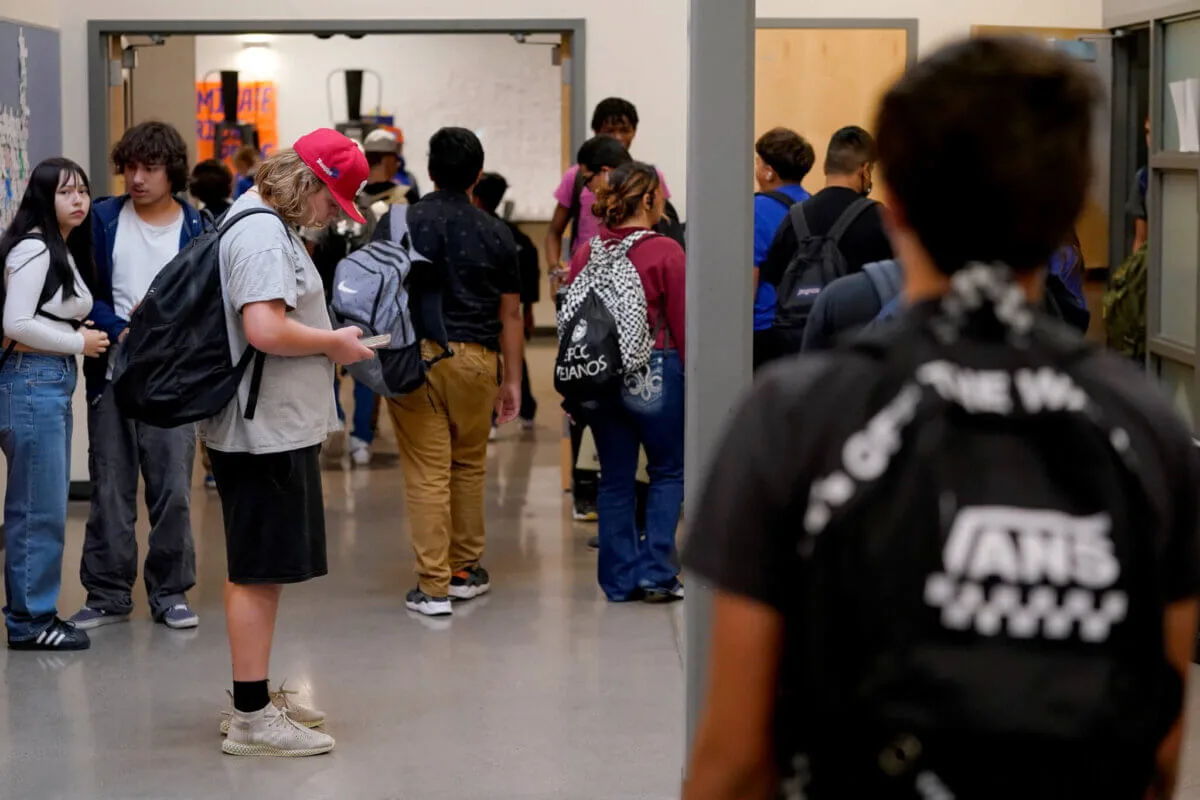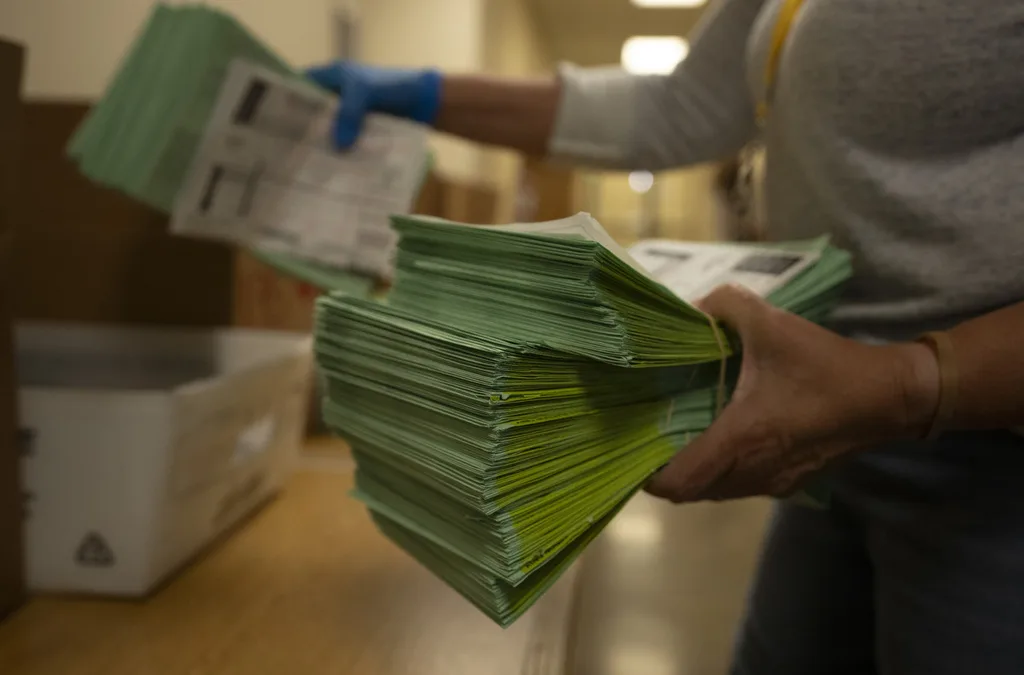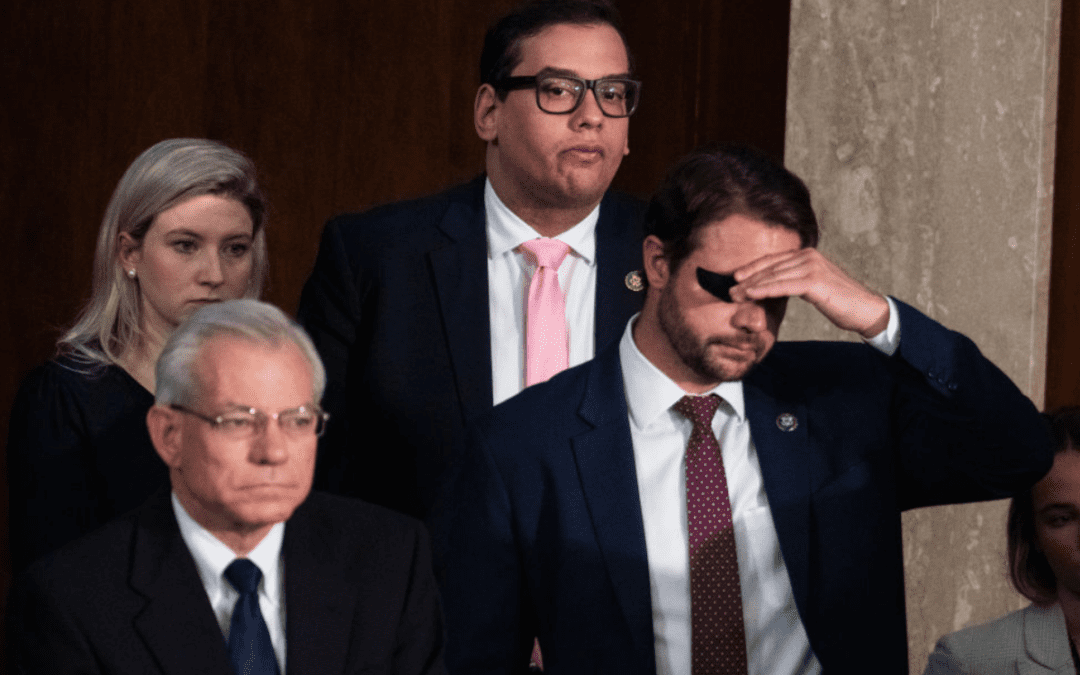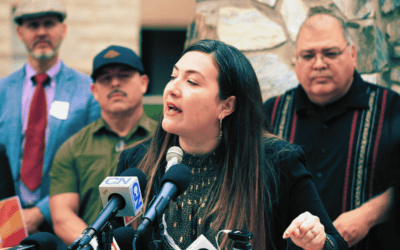
Westwood High School students make their way to classes, Tuesday, Oct. 18, 2022 in Mesa, Ariz. (AP Photo/Matt York)
The Arizona state budget will roll out $15.5 million for dual enrollment tuition, with priority given to low-income students—and a one-time $1,000 stipend set aside for teachers certified to teach the courses.
Arizona high school students just got a huge investment in their opportunities to go to college.
Over $15 million of the state’s budget next year will go towards dual-enrollment funding for students, offering bonuses to educators who teach the classes and discounts to students who take them. Students participating in the free-and-reduced-lunch program will be given priority to receive reimbursement.
For Arizona news you can look forward to, sign up for our FREE daily newsletter here.
To be considered dual-enrollment, classes must be accepted by both high schools and colleges for course credit and taught by instructors who are dual-enrollment certified. The majority of dual-enrollment courses are taught at the high schools, and students can take them as a regular part of their schedule.
Many students go on to transfer these credits from community colleges to four-year universities or qualifying trade schools—getting a head start on their college education.
The Arizona Department of Education is determining the specifics of how the funding will be provided, said Lauren Armour, government relations director at Maricopa Community Colleges.
“It could give students who currently face a financial barrier to accessing dual-enrollment classes the opportunity to take the courses, although it will depend on what parameters are set for the funding and how it’s distributed,” Armour said.
There is no comparable investment in dual-enrollment like this, Armour said.
“Maricopa [Community Colleges] is one of the largest providers of dual-enrollment,” Armour said. “We’re really hopeful at Maricopa that that funding will allow some new students to access our dual-enrollment offerings.”
About 20% of total headcount at Maricopa Community Colleges is dual-enrollment students and about 10% of enrollment for the fall 2022 was dual-enrollment students at Mesa Community College, said Joshua Lindenberg, interim dean of enrollment services at Mesa Community College.
Dual-enrollment students have risen from 4% of Mesa Community Colleges’ student population to 12%, Lindenberg said.
“The intangibles of questions like ‘Am I college ready?’—they completely go away because students are completing college coursework in high school, and they’re ready to then move forward into a university,” said Janice Palmer, senior vice president of government affairs and public policy at Helios Education Foundation.
Inequities in Dual-Enrollment
The Helios Education Foundation released research earlier this year highlighting that high school students who participate in dual-enrollment are more than twice as likely to attend college, more likely to stay enrolled and complete their degree, and earn higher GPAs.
But their research found that only about 24% of Arizona high school students take at least one dual-enrollment course—and Latino students and low-income students, who are often eligible for free and reduced lunch, have the lowest enrollment rates.
RELATED: New Report Shows Gaps in Dual Enrollment Offerings From Arizona High Schools
There is a difference between the non-dual enrollment students at Mesa Community College and the dual-enrollment students, with dual-enrollment students tending to be less first-generation college graduates, Lindenberg said.
For non-dual enrollment students, the student population at Mesa Community College is around 54% for first-generation students, and between 25% to 35% for dual-enrollment students, Lindenberg said.
There is a complicated process to enrolling in dual-enrollment courses that can be intimidating to many first-generation students, Lindenberg said, contributing to this difference in the student body.
Bonus For Teachers
Included in the state budget’s dual-enrollment funding is a $1,000 one-time bonus for teachers that are certified to teach dual-enrollment courses.
One of the biggest challenges for dual-enrollment is finding qualified teachers to teach the courses in high schools, said Anderson.
Teachers must complete 18 graduate credits in the discipline they will be teaching to be certified as a dual-enrollment instructor.
“For teachers to go back to school and get the 18 graduate credits…I just don’t know if [the bonus] is going to be an incentive,” Anderson said.
The Arizona Teachers Academy Scholarship provides funding for teachers to take classes at any of three public state universities (Arizona State University, University of Arizona, and Northern Arizona University) to gain certification to teach dual-enrollment courses.
How Does the Funding Work?
If students pass a dual-enrollment course and obtain at least a 2.5 GPA, then the school they’re attending is reimbursed $50 per credit hour, which covers the full cost for most community colleges around the state, with caps of $300 for students in ninth and 10th grades, and $600 for students in 11th and 12th grades.
At Maricopa Community Colleges, one lower division credit is $97 per credit hour for Maricopa County residents. If a student meets requirements, the school would receive $50 and the student would be billed the remaining $47.
“The intention is that we keep track of the students who are enrolled, but then the actual reimbursement goes to the entity, so students aren’t out of resources or they don’t have the burden of having upfront costs,” said Palmer. “The student does not receive the money, the provider [community college or criteria-meeting career technical education institution] does.”
RELATED: Students in Arizona Dual Enrollment Classes Experience More Benefits than Just College Credit
Dual-enrollment students cannot look to the Free Application for Federal Student Aid (FAFSA) to fund their early college credits—in order to complete the FAFSA, the applicant must already have a high school diploma, Lindenberg said.
Many job opportunities in Arizona require past a high school diploma, so to fill that employment gap between the jobs that are available and the skill sets needed, dual-enrollment is a huge contributor, Lindenberg said.
“I think this is going to be a game changer for our students and provide a more equitable outcome for all students in this state to be able to go on to post-secondary [education],” said Palmer.
Subscribe to The Copper Courier’s daily newsletter! We keep it 💯—just like the temperature.
Support Our Cause
Thank you for taking the time to read our work. Before you go, we hope you'll consider supporting our values-driven journalism, which has always strived to make clear what's really at stake for Arizonans and our future.
Since day one, our goal here at The Copper Courier has always been to empower people across the state with fact-based news and information. We believe that when people are armed with knowledge about what's happening in their local, state, and federal governments—including who is working on their behalf and who is actively trying to block efforts aimed at improving the daily lives of Arizona families—they will be inspired to become civically engaged.


He said what? 10 things to know about RFK Jr.
The Kennedy family has long been considered “Democratic royalty.” But Robert F. Kennedy, Jr.—son of Robert F. Kennedy, who was assassinated while...

Here’s everything you need to know about this month’s Mercury retrograde
Does everything in your life feel a little more chaotic than usual? Or do you feel like misunderstandings are cropping up more frequently than they...

Arizona expects to be back at the center of election attacks. Its officials are going on offense
Republican Richer and Democrat Fontes are taking more aggressive steps than ever to rebuild trust with voters, knock down disinformation, and...

George Santos’ former treasurer running attack ads in Arizona with Dem-sounding PAC name
An unregistered, Republican-run political action committee from Texas with a deceptively Democratic name and ties to disgraced US Rep. George Santos...





